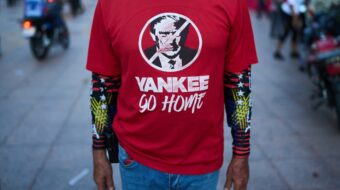
World War II: the good and righteous war. We still celebrate in the 21st century the heroic success of the 16.2 million who fought in the last uncomplicated conflict.
My dad, Arthur “Dutch” Schultz, a paratrooper with the elite 82nd Airborne Division, was plucked from obscurity after the war and achieved a certain amount of fame in movies, books, and television for his participation in historic events, including D-Day, Market Garden, and the Battle of the Bulge. My step-dad, a seaman, remained one of the unrecognized millions who also answered their country’s call by serving on a Navy cruiser in the Pacific.
Mythologizing and romanticizing World War II ignores its complex legacy. Postwar, my two fathers walked starkly different paths. Tragedy and trauma haunted one, while the war was a springboard for the achievements of the other.
Exposure to combat was the difference. Contrary to once popular opinion, all veterans didn’t return on an equal psychological footing. The celebration of war’s end in 1945 sparked a wholehearted welcoming of all returnees, with no distinction made between combat and support troops and no assistance given to the battle-scarred.
But combat is life-altering. In World War II, it was relatively rare. Historians have noted that about one in four of deployed U.S. troops were in combat zones. Just one in ten saw extended combat. Infantry, rangers, combat engineers, paratroopers, and Marines were some of the front line units that often bore the brunt of the fighting. Prisoners of war endured a special hell. Many esteemed World War II vets had been spared the horror and brutality that was experienced by a minority.
The conventional view of a “good war” harmed many returning warriors. World War II was a necessary war, but no war is good. Public recognition of sacrifices and the trauma caused by combat in World War II has taken decades and is still incomplete. Histories of the conflict are mainly cleansed and scrubbed of the terror and bloodshed experienced by many Americans.
Tomes about the postwar era, as typified by Tom Brokaw’s Greatest Generation books, portray easy readjustment of the vets, happy families with 2.5 kids, and achievement of the American Dream.
My family in the 1950s superficially fit the stereotype. My parents were an attractive couple with two cute little girls. But my family history is indicative of the Greatest Generation combat veterans’ dirty little secret. My paratrooper dad’s attempt to regain normalcy after the war was a struggle that affected us all.
The Schultz family’s postwar travails, including alcoholism, divorce, and multiple marriages were not the norm in that optimistic era, but were more pervasive than has been recognized. My father, a decorated veteran whose war experiences were memorialized in The Longest Day book and movie, had attempted to get assistance from the VA since the 1940s for his war trauma. When I was a little girl, dad hid the memories except in the still of the night, when he would bolt from a sweat soaked bed, firing his imaginary machine gun.
Over the decades, the VA diagnosed him as having anxiety neurosis, character disorder, and an “inability to digest his wartime experiences.” He struggled to combat his alcoholism and unrecognized PTSD through nightly attendance at AA in the early years of his sobriety. Through his own efforts, with no assistance from the VA, he eventually became a leader in the alcohol and drug addiction field.
The impact on the children of the World War II combat veterans, as well as on the 183,000 American daughters and sons who were rendered fatherless during the war, has for the most part been ignored. The impulse to mythologize our last declared war and ignore postwar problems created a culture in which the needs of today’s military children have taken too long to be recognized.
A lack of awareness that the conventional wars of the past created just as much trauma as that of the present wars does a disservice to the brave veterans of those previous conflicts and also to our young soldiers, who need to realize that their grandfathers had the same invisible wounds from combat that they do.
Carol Schultz Vento is the author of the upcoming book “The Hidden Legacy of WWII.” She lives in Palmyra, New Jersey. This article is distributed by Other Words, a project of the Institute for Policy Studies.
Photo: The National World War II Memorial in Washington. afagen CC 2.0










